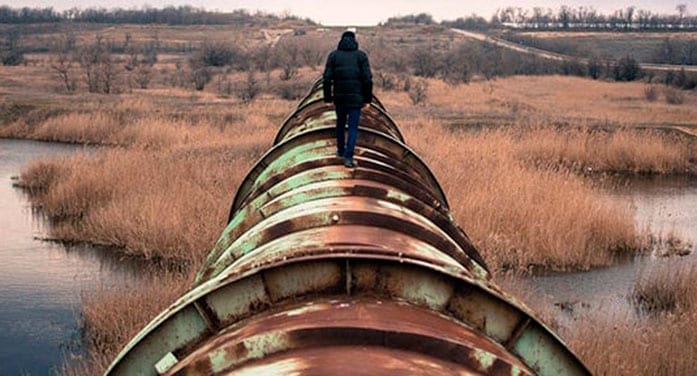 The long-suffering citizens of Alberta recently learned that they’re on the hook for yet more billions of dollars via an ill-advised investment in an oil pipeline.
The long-suffering citizens of Alberta recently learned that they’re on the hook for yet more billions of dollars via an ill-advised investment in an oil pipeline.
The Keystone XL project was festooned with red flags well before the injection of hard-earned and now lost taxpayer funds.
Political risk can be hard to quantify but it’s one of the key things serious investors analyze closely during the decision-making process on large, impactful investments.
When a long-observed, large infrastructure development with much controversy and legal imbroglios attached to it is in danger of being cancelled by its original proponent, as the Keystone XL pipeline was by TC Energy early last year, it could be a warning signal to others that caution is in order. The message is that the prudent speculator would best stay away.
Instead, the Alberta government doubled down on exposure to the risks. The province is already highly dependent on the oil and gas industry and now is linked to how that industry’s products are conveyed to markets beyond its borders.
Magnifying such dependence is not the job of a government. One aspect of its role should be to actually reduce or mitigate such dependence. That would mean extricating itself from the sector as best it can, or encouraging other parts of the economy to prosper and grow.
In a word: diversification.
The warning signs were there for years. All pipelines, existing, proposed or repurposed, have faced regulatory permitting problems, environmentalist lawsuits, landowner protests and lawsuits, First Nations blockades and protests, and politicians’ broadsides and threats of cancellation.
FROM THE ARCHIVES: Bringing the facts back to the Keystone XL debate by Tom Olsen
Such threats weren’t just manifest for this particular project; they were profuse almost from the get-go.
The project was originally mooted in 2008 and proceeded in fits and starts. The first route had to be changed after landowner opposition in Nebraska. Judges granted stays of construction in several instances.
Most of the delays and conflicts occurred in the United States but opposition from climate change groups slowed progress in Canada, too.
Meanwhile, the business case for the project deteriorated, with the proliferation of other pipeline alternatives, pipeline expansions, and oil-by-rail alternatives adding up to sufficient capacity to handle the estimated increase in Western Canadian oil and bitumen (oil sands output not yet upgraded to synthetic light oil). The supply is anticipated to top out at about five million barrels per day within five years or so (it’s at 4.5 million barrels today).
Given what was known about the political and sectoral hazards facing Keystone XL last year, it’s difficult to understand the decision-making the Alberta government undertook to buy into the scheme. The ostensible reason was to assure project backers that the government was committed to its completion.
However, such a speculative investment could never give such an assurance. Keystone XL’s fate was in the hands of other actors, such as the Democratic Party of the United States, which was publicly dedicated to stopping it. So were many independent forces, including the inexorable and uncompromising climate change movement.
Shrewd investors very carefully avoid or hedge politically risky, speculative investments in uncertain, contentious, dangerous territories or industries, and generally take a pass entirely.
This would have saved Albertans billions of dollars, which would have in useful in these COVID-19-ravaged economic times.
Governments should stay out of business ventures because they’re usually bad at them. This is just the latest example.
Ian Madsen is a senior policy analyst with the Frontier Centre for Public Policy.
Ian is one of our Thought Leaders. For interview requests, click here.
The views, opinions and positions expressed by columnists and contributors are the authors’ alone. They do not inherently or expressly reflect the views, opinions and/or positions of our publication.

